What Can Go Wrong With Your Feet As You Age

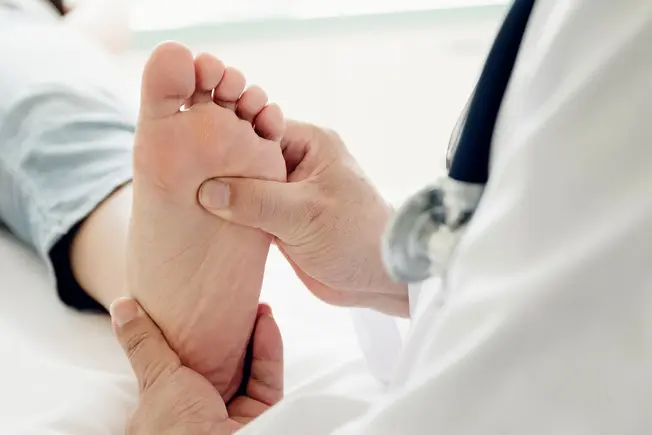
Fat Pad Atrophy
Getting older often can bring on extra weight and fat. But the one place you can lose padding is in your feet. That’s bad, because you need the cushioned layer to protect your tootsies from daily pounding. You may feel pain in the ball of your foot and heel. Shoes with cushions or custom-made foam shoe inserts called orthotics may help. Or your foot doctor may suggest another treatment like filler injections to replace the fat pad.
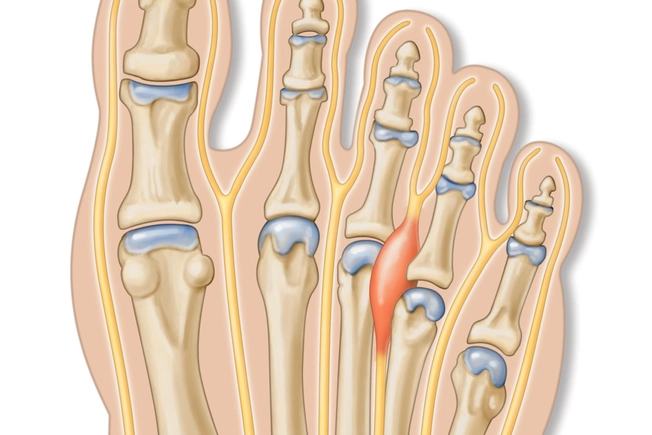
Morton’s Neuroma
Morton's Neuroma is a very common foot condition. As many as one in three people may have it. Symptoms include pain in the front part of your foot or a feeling like you’re walking on a rock or a marble. It happens way more often in older women and in those who wear high heels or shoes with a tight toe box. Switching footwear, shoe pads, and massage may help. If your pain gets severe, your doctor may suggest steroid shots or surgery.
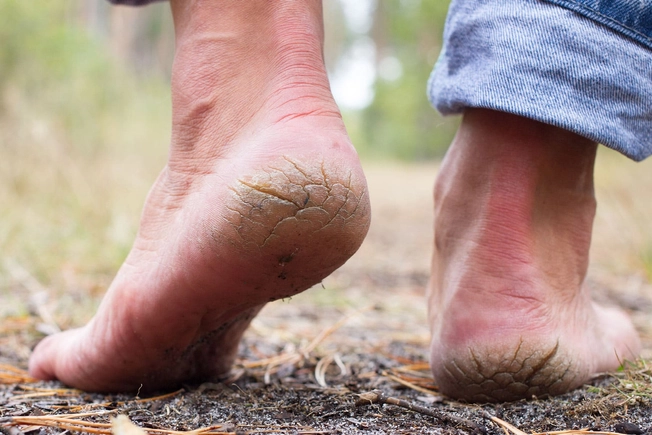
Cracked Heels
Mature skin makes less oil and elastin, which leaves it drier and less supple. Without regular care, your heels may harden, crack, or hurt. Being overweight worsens the problem. Special creams called keratolytics help slough off the tough top layer. Follow up with a pumice stone to remove dead skin. Apply moisturizing lotion every day. If your heels get swollen and red, talk to your doctor. You may need a prescription ointment.
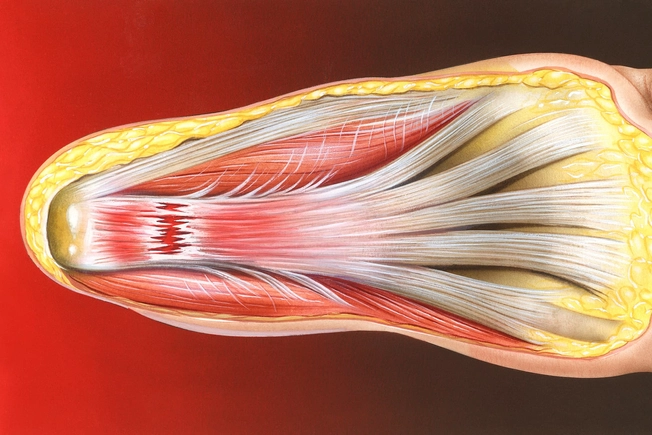
Plantar Fasciitis
Got pain on the bottom of your heels? This condition is the No. 1 reason for it. The plantar fascia is a long ligament that runs along the sole of your foot and supports your arch. Repeated stress, like jogging, or even everyday strain can irritate it, causing pain and stiffness. If you have high arches or are overweight, you may be more prone to this problem. Rest, ice, over-the-counter pain meds, and calf muscle stretches can help.
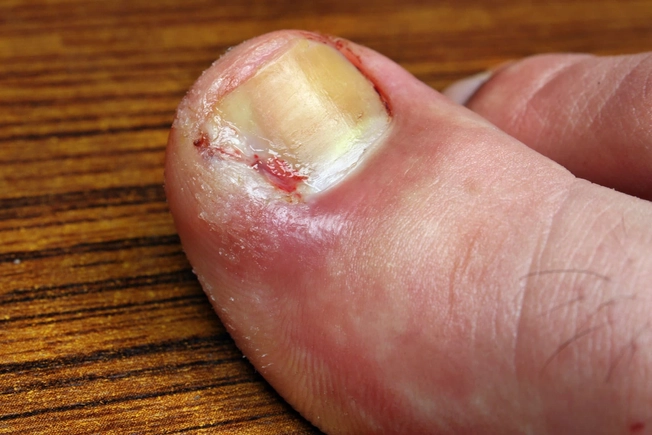
Ingrown Toenails
Sometimes, the side of a nail (usually on the big toe) grows into the skin. It can happen at any age, but it’s more common in older folks. Your toe may swell, hurt, and get infected. Sweaty feet, being overweight, and diabetes all add up and raise your chances for an ingrown toenail. To prevent it, avoid cutting your toenails too short or wearing tight shoes. In severe cases, your doctor may have to remove the nail root.
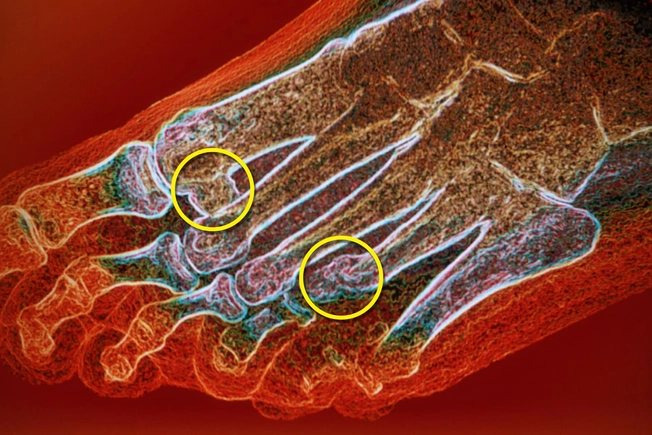
Osteoarthritis
By the time you reach your 50th birthday, your feet may have trekked 75,000 miles or more. All that wear and tear or a previous injury can lead to osteoarthritis. It happens when cartilage, a flexible tissue that prevents friction, breaks down. That lets bone rub against bone. Most people who get it are over 65.
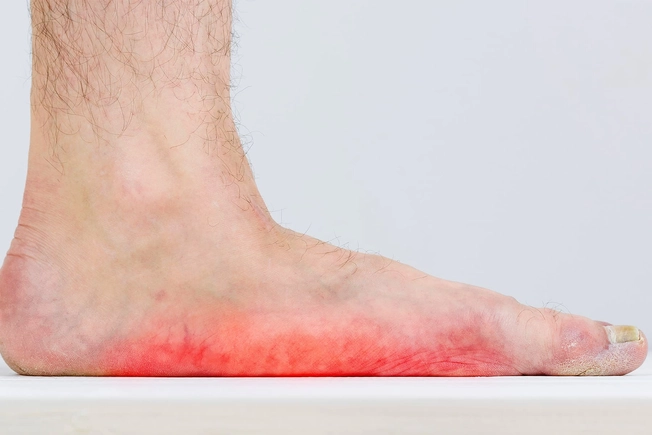
Flat Foot
Many babies are born with flat feet, but more than 80% outgrow it. Some adults get flat feet because of an injury or things like obesity, diabetes, and high blood pressure. Tendons that support your arch get damaged and flatten your feet. It can hurt. A giveaway is that your feet jut out, so most of your toes are visible from behind your leg. Normally, you'd see only the fourth and fifth toes. Orthotics, physical therapy, braces, and surgery can help.

Achilles Tendinitis
The Achilles is the tendon you use to flex your foot when you climb stairs or go up on your toes. Age and lowered blood supply can weaken the tendon. Your heel or the back of your ankle may hurt. Rest, icing, and medication can help fight the swelling. Don’t ignore the problem. You could need surgery for serious tears.
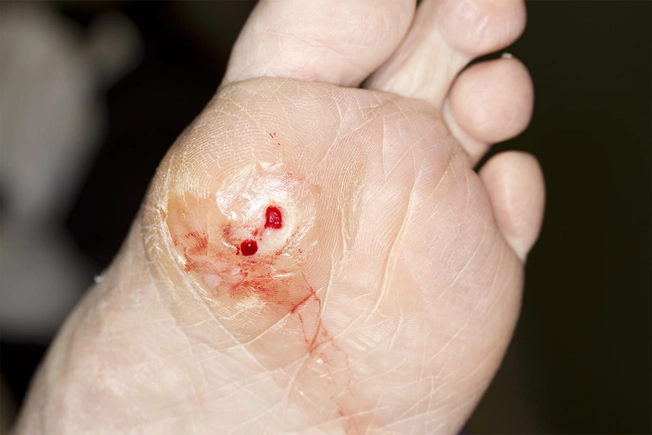
Diabetic Foot Ulcer
Diabetes can damage your nerves so that you may not feel small cuts or wounds. Your feet also might tingle, feel numb, or have jabbing pain. Foot ulcers can start as something small like a blister, but then get bigger and infected. They’re a major cause of amputations in people with diabetes. Keep blood sugar controlled, and check your feet often. See a doctor right away if you see anything odd.

Gout
Gout is a painful form of arthritis is most common in middle-aged men. It happens when a waste product called uric acid collects as crystals, often in the big toe. It can swell, stiffen, and hurt a lot. Your doctor may prescribe medicine to ease the swelling. You may feel better in about a day. Exercise, eat less red meat and shellfish, go easy on alcoholic beverages and sugary foods, and drink lots of fluids to help prevent future attacks.
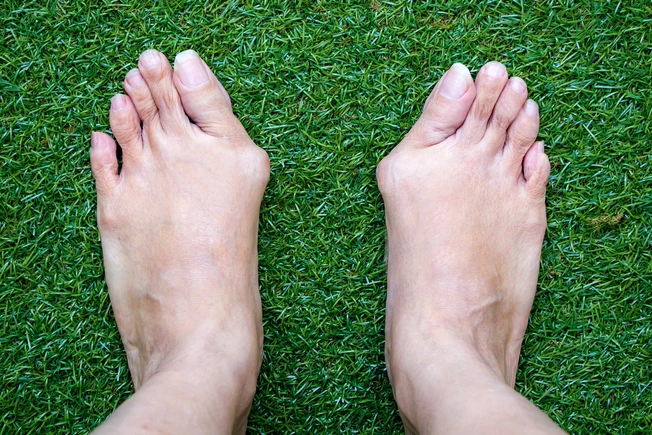
Bunions
These are painful bony lumps that grow along the inside of your foot at the joint where your big toe meets your foot. Bunions grow slowly as the big toe angles inward. Tight, narrow, shoes like high heels may worsen them. That’s why bunions appear much more often in women. They can run in families, too. Icing, special pads, and shoes that aren’t too tight help. Your doctor might suggest surgery in serious cases.
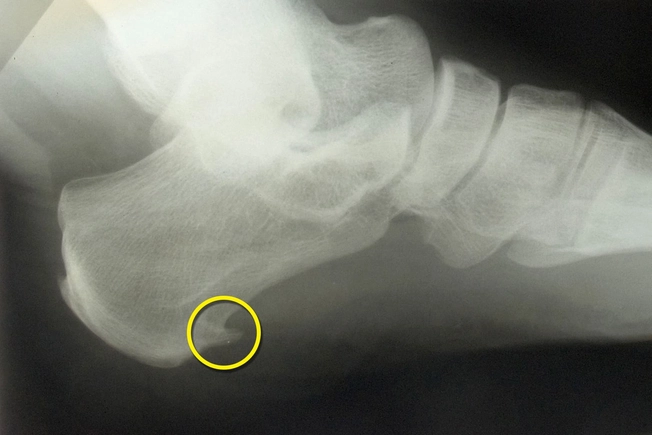
Bone Spurs
You might mistake these smooth bony growths for bunions. With bunions, the bones are out of place. Bone spurs, on the other hand, are growths at the edge of the bones of your foot, often at your heel, mid-foot, or big toe. If they get big enough, they’ll push on nearby nerves and tissues and will hurt. Osteoarthritis or a strained tendon or ligament can cause these growths, which are more common as you age, especially after age 60.
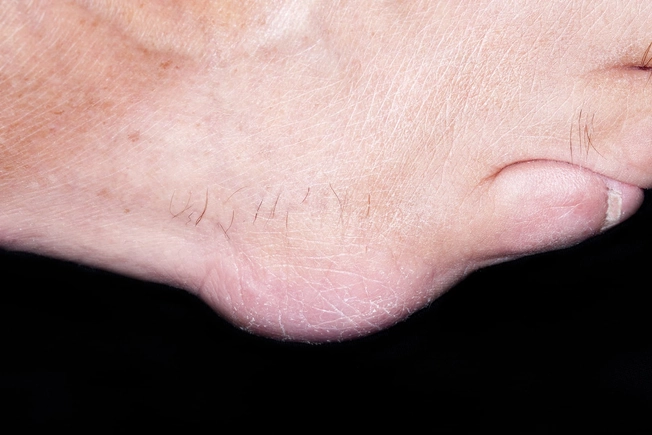
Bursitis
Small fluid-filled sacs, called bursae, help cushion your joints, bones, and tendons. Repeated motion or friction from shoes can make them swell. In the foot, your toes or heel might get red, swollen, and painful. Ice, padding, and non-steroidal anti-inflammatory drugs (NSAIDs) such as aspirin, ibuprofen, and naproxen can help. Severe cases may need a corticosteroid shot or even surgery.
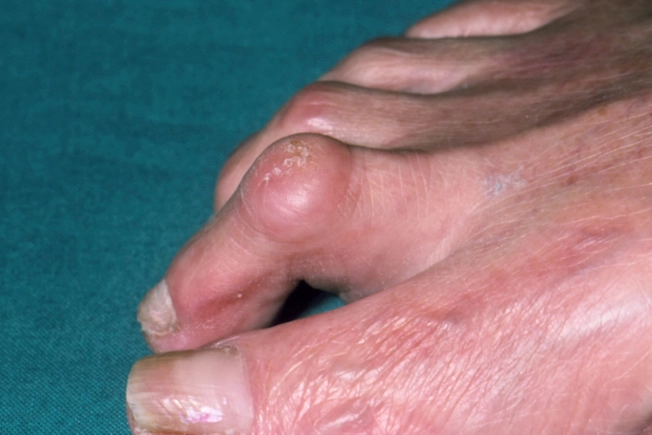
Hammertoe
It’s an abnormal bend in the middle joints of your toe. It’s usually your “second” toe, next to the big one. But it also can affect the third, fourth, and fifth toes. You’ll notice an unusual shape, and you may have some pain when you move it, as well as corns and calluses from the toe rubbing against your shoe. Your doctor can treat it with special footwear, pain meds, and sometimes surgery.
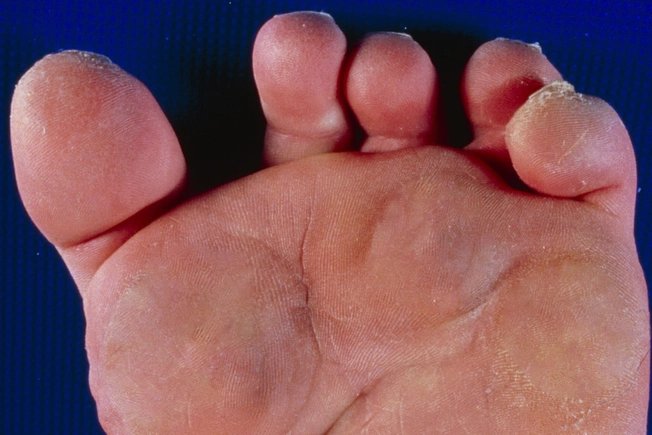
Claw Toe
This kind of misshapen foot is similar to hammertoe. But instead of just the middle joint, claw toes also affect the joints closest to the tips of your toes. Your toes curl and dig straight down into the floor or the soles of your shoes. Claw toes grow stiffer with age. If you can move them, try strengthening exercises like picking up a marble or piece of paper with your toes.
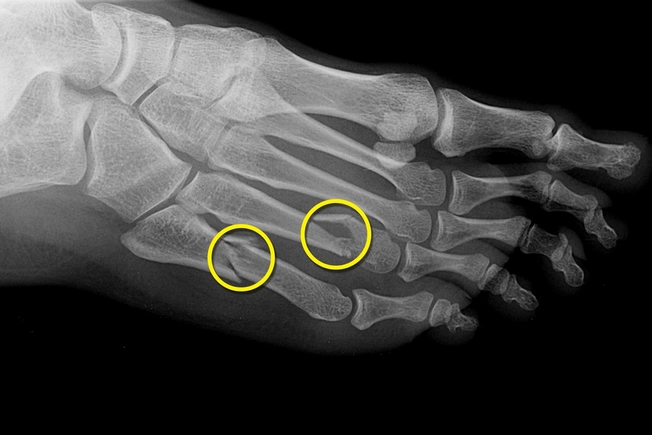
Stress Fractures
For women, the hormone changes that come with menopause can lower your bone density (osteoporosis) and make it easier to fracture bones, including those in your feet. Men may also get more brittle bones as they age. A stress fracture needs several weeks of rest to heal. You’ll want to strengthen your bones with exercise, diet, and perhaps also medication. Ask your doctor about the risks, benefits, and what would help you the most.
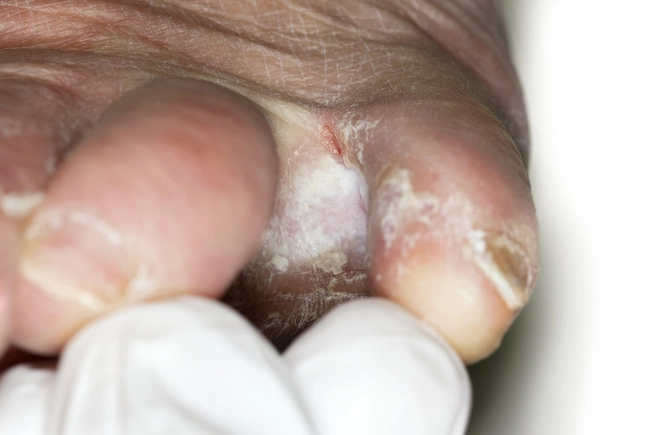
Fungal Infections
Less elastic skin and weaker immunity can invite more fungal infections in seniors. The sole of your foot may scale and itch. If it’s not treated, the infection can spread to your toenails. Treatment includes antifungal creams and sometimes pills. Fungus is hard to kill, so use your medication for as long as directed. Tip: Don’t smear cortisone creams on the rash. They weaken the skin’s defenses and worsen the infection.
